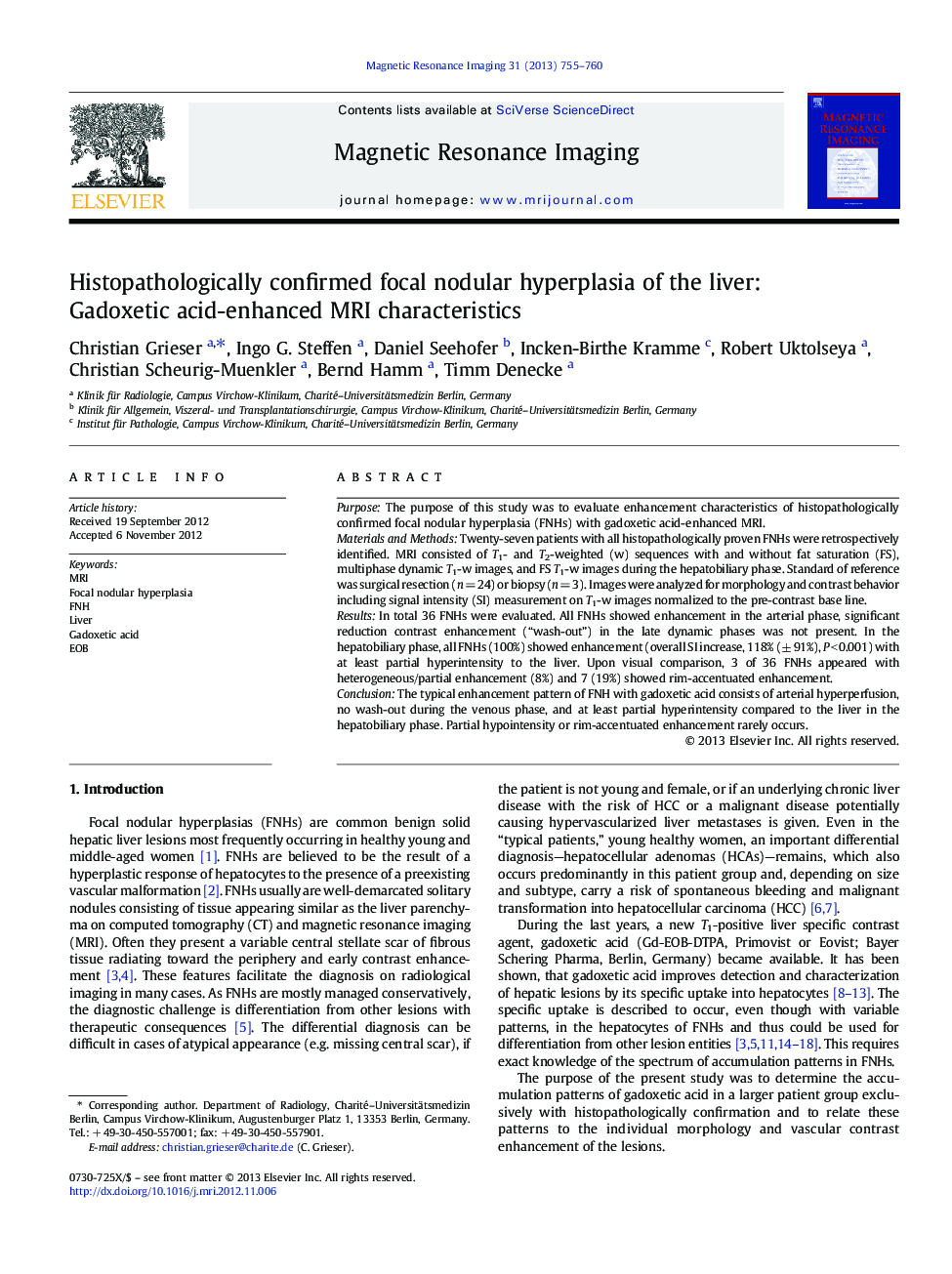| Article ID | Journal | Published Year | Pages | File Type |
|---|---|---|---|---|
| 1806507 | Magnetic Resonance Imaging | 2013 | 6 Pages |
PurposeThe purpose of this study was to evaluate enhancement characteristics of histopathologically confirmed focal nodular hyperplasia (FNHs) with gadoxetic acid-enhanced MRI.Materials and MethodsTwenty-seven patients with all histopathologically proven FNHs were retrospectively identified. MRI consisted of T1- and T2-weighted (w) sequences with and without fat saturation (FS), multiphase dynamic T1-w images, and FS T1-w images during the hepatobiliary phase. Standard of reference was surgical resection (n = 24) or biopsy (n = 3). Images were analyzed for morphology and contrast behavior including signal intensity (SI) measurement on T1-w images normalized to the pre-contrast base line.ResultsIn total 36 FNHs were evaluated. All FNHs showed enhancement in the arterial phase, significant reduction contrast enhancement (“wash-out”) in the late dynamic phases was not present. In the hepatobiliary phase, all FNHs (100%) showed enhancement (overall SI increase, 118% (± 91%), P < 0.001) with at least partial hyperintensity to the liver. Upon visual comparison, 3 of 36 FNHs appeared with heterogeneous/partial enhancement (8%) and 7 (19%) showed rim-accentuated enhancement.ConclusionThe typical enhancement pattern of FNH with gadoxetic acid consists of arterial hyperperfusion, no wash-out during the venous phase, and at least partial hyperintensity compared to the liver in the hepatobiliary phase. Partial hypointensity or rim-accentuated enhancement rarely occurs.
